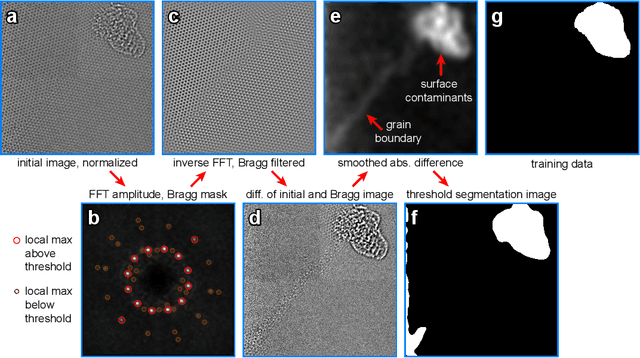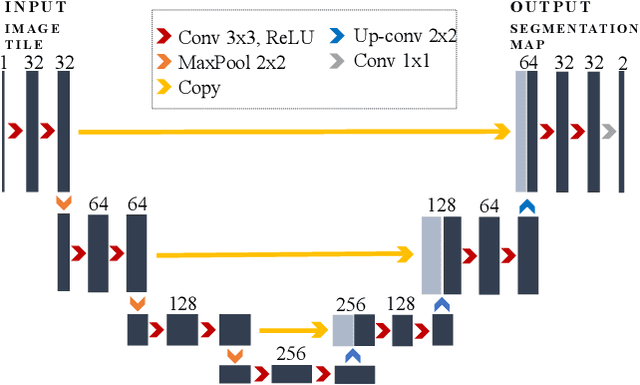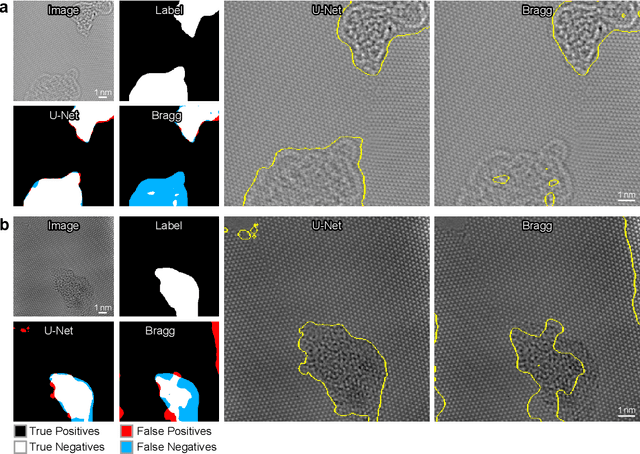Deep Learning Segmentation of Complex Features in Atomic-Resolution Phase Contrast Transmission Electron Microscopy Images
Paper and Code
Dec 09, 2020



Phase contrast transmission electron microscopy (TEM) is a powerful tool for imaging the local atomic structure of materials. TEM has been used heavily in studies of defect structures of 2D materials such as monolayer graphene due to its high dose efficiency. However, phase contrast imaging can produce complex nonlinear contrast, even for weakly-scattering samples. It is therefore difficult to develop fully-automated analysis routines for phase contrast TEM studies using conventional image processing tools. For automated analysis of large sample regions of graphene, one of the key problems is segmentation between the structure of interest and unwanted structures such as surface contaminant layers. In this study, we compare the performance of a conventional Bragg filtering method to a deep learning routine based on the U-Net architecture. We show that the deep learning method is more general, simpler to apply in practice, and produces more accurate and robust results than the conventional algorithm. We provide easily-adaptable source code for all results in this paper, and discuss potential applications for deep learning in fully-automated TEM image analysis.
 Add to Chrome
Add to Chrome Add to Firefox
Add to Firefox Add to Edge
Add to Edge